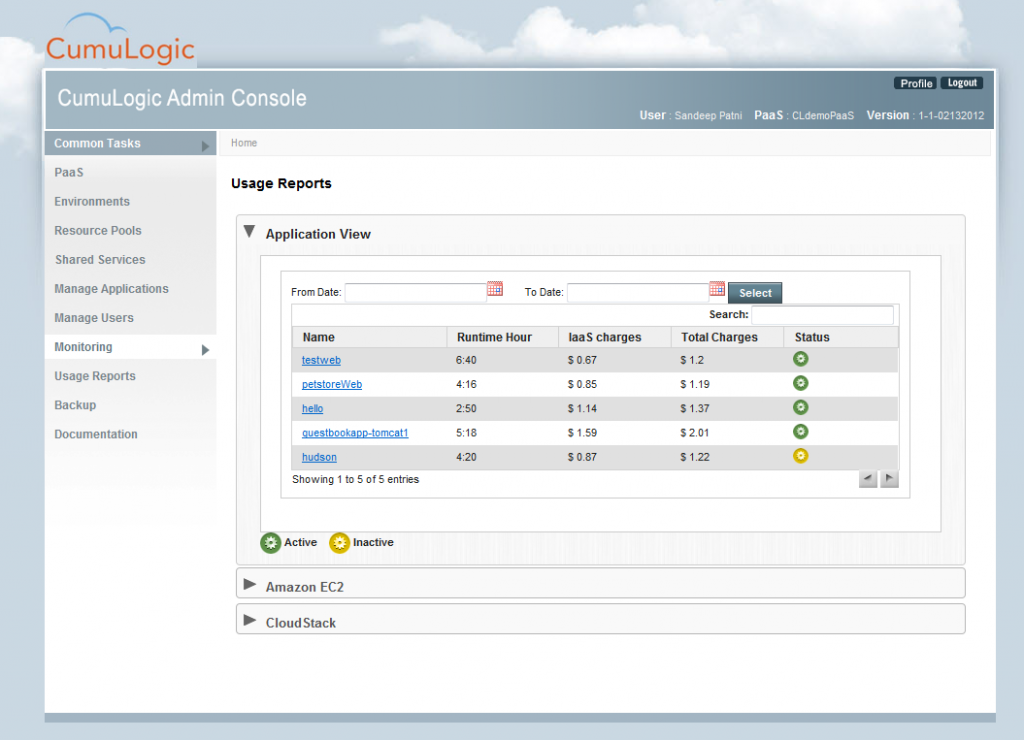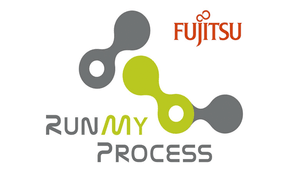PaaS
CumuLogic Redefines Java PaaS

CumuLogic offers a complete platform for running applications in the Cloud. Founded by a team of seasoned Sun Microsystems professionals, CumuLogic enables organizations to build Java Platform-as-a-Service infrastructure. Rajesh Ramchandani, a founder and Vice President of Products at CumuLogic, spoke with us and shared his views about the Platform-as-a-Service market and why building applications in the Cloud is the future.
For more information about CumuLogic, visit their website and read our product review.
How was CumuLogic founded? What inspired you to establish it?
The core founding team at CumuLogic comes from Sun Microsystems, which was acquired by Oracle. The core team’s background is Java and cloud computing. We spent a lot of time doing cloud computing at Sun and prior to that, I spent a lot of time doing Java. We identified a gap in the marketplace, which was building the Java Platform-as-a-Service; we identified that as the core competency of the team and decided that was the right thing for us to do. So, CumuLogic is a software provider whose mission is to develop a robust solution to manage applications on any Cloud.
CumuLogic is focused exclusively on the Java platform. What are the benefits of having a platform dedicated to Java?
Java is predominant today. If you look at the number of applications or enterprises who run Java, it’s fairly large – by far, the largest of any other platform today. Java is highly complex, so given the type of highly skilled and complex applications that we build these days, we run into the problem of, “How do you run back on the Cloud? How do you make it agnostic to the Cloud? How do you give the end user the same experience – whether it is a Rackspace Cloud or Amazon Cloud or HP Cloud? How do you make the run time management of applications and scalability of applications very, very easy for customers?” It’s a fairly complex problem to solve. We have dedicated ourselves to focus on Java itself and the issues that we know we have to solve on the Cloud. That, in and of itself, is a huge problem to solve. Having focused on Java, you need to be able to enable all kinds of new model applications that are being built. Like, SQL databases that we have to integrate with each application and infrastructure. Also, to enable enterprises who want to migrate their existing applications over to the Cloud. So we want to be able to help do that as well. Considering the complexity involved in all those things, I think it just makes sense to be dedicated to Java only. The opportunity itself is large.
Who are some of the competitors to CumuLogic and what do you do differently from them? How do you stand out?
The focus that we have is basically that we want to sell software. We empower Cloud providers, like HP Cloud or Rackspace Cloud or any other Cloud provider. We give them software that they will use to build a Platform-as-a-Service on their Cloud, so they can offer that as an additional service besides whatever service that they sell. We are not service providers ourselves. If you look at that category, the only other solution that we see in the marketplace is Cloud Foundry, which is the open source software. We think they have the potential in the same space as us. Other than that, we don’t know any major player who is actually focused on shipping software for building a Platform-as-a-Service.
Platform-as-a-Service is a big trend right now. Where do you see this segment headed in the next five years?
In five years, I think it has to be only Platform-as-a-Service for enterprises, for any company that has to quickly go to market with their applications, with their solutions, with their services. There is very little incentive for them to manage compute, manage virtual machines, manage networking and storage. That thing is not something that enterprises or anybody should be doing. They should be focused on deadlocking quality applications, building highly scalable application code, and leave the rest to the Platform-as-a-Service providers, who actually take and simplify their development, simplify their deployment, and keep their application running on the Cloud. So we see that the trend will be going up higher on the stack, and people will start to say, “Hey, you don’t want to get into managing virtual machines anymore. We will give you our application code, and then can you run this on the Cloud?”
What challenges do you see for businesses who want to migrate to the Cloud? How do you think these challenges can be overcome?
I think it’s a mindset issue. First of all, within enterprises, a lot of people still don’t understand Platform-as-a-Service and the associated technologies that can help them to migrate over to the Cloud. So there is basically a learning curve where people need to be educated about how Platform-as-a-Service is beneficial and useful to them. A lot of companies have started to do that.
The second challenges are that not all applications are conducive to be run on the Cloud, and they should not be actually migrated over to the Cloud. Enterprises have to spend some time and evaluate some of the applications that definitely make sense for them to continue deadlocking in the first place and continue their investment in those applications. Once they decide that they want to continue investing in those apps, then they need to evaluate the technical feasibility of migrating over to the Cloud. Given the platform that we have built, we make it extremely simple to migrate applications over to the Cloud. We believe that we can move a large percentage of apps over to the Cloud with less than five to 10 percent changes in the application.
So a big challenge is the learning curve for people to understand how it impacts not only IT infrastructure, but also business offices and the skill set that they have in-house, the existing investments that they have in the people, processes, technology and tools. How does that go over to the Cloud, over to PaaS? They need to understand all that. Once they do that, once they identify all issues, then they will start to look at these applications that can actually be better for offsetting on the Cloud and consolidated on the Cloud on a platform, rather than them sitting on silos and data centers.
What is the most exciting thing about your software? What makes you excited about it?
The exciting thing is that there are a lot of complexities. We’ve been building applications for pretty much several decades now. Java has been predominant in the past 15-17 years since 1995 when Sun introduced Java. We have learned a lot on how to build applications, but we have built applications for in-house data centers. We have never understood how to deploy those applications in a large-scale, Cloud infrastructure, right? So the solutions, like security solutions, management solutions, the tools that we use to manage – all of that has been designed for in-house deployments. Once you go on the Cloud, it’s all together a different story. Now you have to bring all those tools or retool the tools to be able to manage those apps on the Cloud. You have to tweak your security policies. You have to tweak your security solutions. You have to change your governance policy engines to be able to allow you to do the same things that you did in-house on the Cloud. So the complexity and the problems that we have to solve are huge. It’s a lot of problems. Plus, we have to enable enterprises to move from their existing legacy infrastructure over to the new, next-generation application infrastructure–such as SQL databases, such as Hadoop–where they will be able to do a lot more processing and analytics on their applications that they haven’t been able to do in-house. I think considering what we have to solve here, it shows that we are going to solve what’s in front of us, which is really, really exciting for us. This is the best thing we could ever do.

Who do you think are the most exciting, interesting people or companies in this market segment right now? Why?
We believe the Cloud Foundry project is very interesting. It has a ways to go, and we will have to see how it evolves over a period of time. Obviously it is dependent on the open-source community and how much effort is put into that community.
There are a lot of smart people out there doing a bunch of stuff. We like the guys over at CloudBees. They have very good credentials. Some of the guys who are doing Cloud Foundry, they are of course smart. The guy who started the Cloud Foundry project—Derek Collison—would be an interesting guy to watch in the next few years if he decides to start his own platform or company. There are quite a few interesting people out there doing Platform-as-a-Service.
What’s next for CumuLogic?
At the moment we are collecting all the feedback from our customers. We listen to their issues and requirements. We continue to build what we hear from our customers at the moment. We continue to see how their needs are evolving. Maybe we will go beyond Java if the market demands for it. So, we will do what our customers want and whatever is the right thing to do for the next generation of applications on the Cloud. We continue to support a lot more infrastructure, a lot more functionality to make it easy for enterprises to be able to migrate their infrastructure to the Cloud, integrate their existing tools and technologies, help them educate their developers, give them exposure, get them all the tools so they can start using the new platforms.
Want more on PaaS and other cloud technologies?> Business-Software.com’s exclusive cloud hosting report compares 10 of the leading solutions on price and key features.






